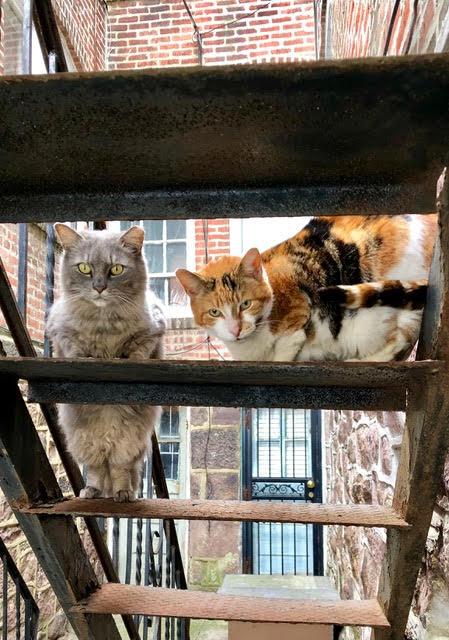 Editor’s Note: This post was submitted by Project MEOW, the West Philly-based volunteer-run cat rescue organization.
Editor’s Note: This post was submitted by Project MEOW, the West Philly-based volunteer-run cat rescue organization.
This year’s sudden onset of cold weather means it’s time to start bundling up! As you brace for winter, don’t forget the outdoor cats in your community! On cold nights and during inclement weather, shelters for colonies of outdoor cats can make a world of difference to them. Building a shelter for the outdoor cats in your neighborhood has many advantages. Aside from keeping your community cats warm and safe from predators and the cold, it will keep them from burrowing into places they shouldn’t be in order to survive.
Shelters can be built with inexpensive materials such as scrap wood, used dog houses, or plastic totes. The key elements to an effective shelter are insulation and accessibility.
Raising the shelter a few inches off the ground by placing it on bricks or a pallet will prevent rainwater or snow from getting into the shelter, as well as keeping the cold ground from soaking up all the heat building up as the kitties snuggle inside. If you are building the shelter out of a plastic tote (which is effective because you can remove the lid to clean the bedding) use the Rubbermaid brand as it will not crack in freezing temperatures. Straw (not hay! Some cats have allergies, just like humans!) is the best kind of insulation, as the cats will want to burrow, and straw will dry out better than blankets or towels. And a small shelter or several small shelters is always better than a big one, as a cat will not be able to warm up in a big drafty shelter.
An accessible shelter should have two exits so nobody gets trapped inside it. A hole of about 6 inches in diameter should be big enough to let cats through while discouraging dogs or raccoons. And while you want the shelter to be discreet and hidden to give the cats some privacy, make sure it’s somewhere where you can get to it easily to bring it in for the summer, to help an injured cat, or to clean it.
As always, one of the best courses of action when you encounter a community colony is to let Project MEOW know so we can give advice or begin to Trap, Neuter and Release the cats. The best way to care for community cats is to make sure the colony cannot grow exponentially in size, which may cause complaints and fewer resources to care for the cats.
Everyone stay warm this winter!
If you find you have room in your home and your heart for a permanent addition to your family, you can find a list of all the cats we have up for adoption on our website. Every cat we adopt out is spayed/neutered, vaccinated for FVRC/P, rabies, tested for FELV/FIV and free of worms and or fleas. Each cat has been quarantined for a minimum of 2 weeks. We would love to find all these former strays a loving home!
– Allyson Church (Project MEOW volunteer)








Recent Comments